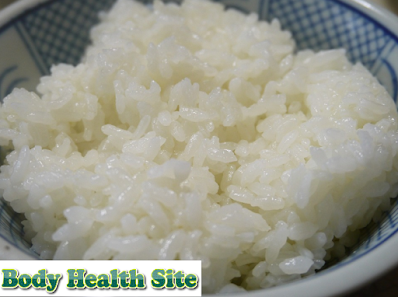Diet without rice to reduce the risk of diabetes
Rice has become part of the eating culture of Asian society in general. Although unfortunately, according to the latest research, these foods turned out to be more at risk of increasing the risk of type 2 diabetes. A study found that groups who consumed white rice more than five times a week had a 17 percent higher risk of developing type 2 diabetes than those who only consumed it once a month. Still from the same study, mentioned that this risk will increase by 10 percent in people who consume large portions of white rice every day. This link is found mainly in people in Asia who consume up to 3-4 servings of rice a day.
Type 2 diabetes itself is a chronic disease that impacts the way the body digests glucose as a source of energy. The body of a person with type 2 diabetes will either reject the effects of insulin or not produce enough insulin to keep glucose levels normal.
 |
| Diet without rice to reduce the risk of diabetes |
This research actually has not been able to prove a cause and effect relationship, but only shows the relationship between the consumption of white rice with diabetes. But at least, this research could be a reason to consume more foods containing whole grains rather than refined carbohydrates (such as white rice).
Sometimes we hear type 2 diabetes tends to be advised to go on a diet without rice. Even so, the meaning of a diet without rice does not mean completely eliminating rice from your menu, but it is better to replace white rice with other carbohydrate sources, such as brown rice or whole-wheat bread.
Replacing White Rice with Whole Grains
Furthermore, a well-known nutritionist doctor stated that replacing 50 grams of white rice daily with brown rice in the same amount was found to reduce the risk of type 2 diabetes by as much as 16%. In the same amount, replacing white rice with wheat or barley was associated with a reduced risk of type 2 diabetes by 36 percent.
Not only to reduce the risk of type 2 diabetes but replacing white rice with whole grains is also recommended for people with type 2 diabetes itself. This is considered because white rice can cause blood sugar to rise suddenly. Whole grains are foods that contain dissolved fiber. Because the fiber takes longer to process, the sugar will be released slowly so that blood sugar levels become more stable. This is why white rice is recommended to be replaced with brown rice or other carbohydrate sources with whole grains, for example, brown rice.
Brown rice is recommended because it contains more nutrients and fiber. Although brown rice and white rice actually come from the same seeds, white rice is processed by grinding which removes the bran layer/husk/ rice husk and its seeds. While in brown rice, the bran layer is still present so that it can make it feel harder after cooking, but more nutritious.
This refining process is then thought to result in white rice being said to have higher glycemic index levels than brown rice. This index shows how certain foods can quickly increase glucose levels in the body. This is why the consumption of white rice more quickly triggers an increase in blood sugar levels after eating. This processing also results in the loss of a number of vitamins, minerals, magnesium, and fiber which generally can act as a protector from the risk of diabetes.
Complementing the No-Rice Diet
Type 2 diabetes is closely related to being overweight so it is very important to maintain your overall diet. Plus, consuming too much white rice and other non-nutritional sources of carbohydrates, such as white bread or white potatoes, not only increases the risk of diabetes, but also other diseases, such as heart disease and obesity. In addition to a diet without rice, also complement your daily menu with the following food sources.
- Add nuts in your menu.
- Inadequate consumption of food sources of vitamin C, such as tomatoes, strawberries, and grapes. People who consume enough vitamin C are thought to have a lower risk of developing diabetes, especially at the age of 40-75 years.
- Consume magnesium-rich green vegetables, like spinach, to help maintain blood sugar levels.
Limit consumption of processed foods, such as cakes or snacks.
In addition to eating healthy and fresh food every day, regular exercise and avoiding bad habits, such as smoking and drinking, can reduce the risk of type 2 diabetes. In addition to lifestyle, someone who has a family history of diabetes has a higher risk of developing diabetes as well. These people are expected to be early in maintaining a healthier lifestyle, including their diet.
FAQ:
- how to lower risk of diabetes,
- how to reduce risk of diabetes,
- how does regular endurance exercise reduce the risk of type 2 diabetes?,
- how does regular exercise contribute to reducing the risk of type 2 diabetes?,
- discuss how the use of pedometers benefited people at high risk for type 2 diabetes. (site 1),
- gestational diabetes increases the risk of the baby developing which of the following?,
- which factor is known to increase the risk of gestational diabetes mellitus?,
- which of the following individuals would have the highest risk for developing type 2 diabetes?,
- discuss how the use of pedometers benefited people at high risk for type 2 diabetes.,
- which risk factors for heart disease are also risk factors for the development of diabetes?,
- how to reduce risk of type 2 diabetes,
- gestational diabetes increases the risk of the baby developing which of the following conditions?,


